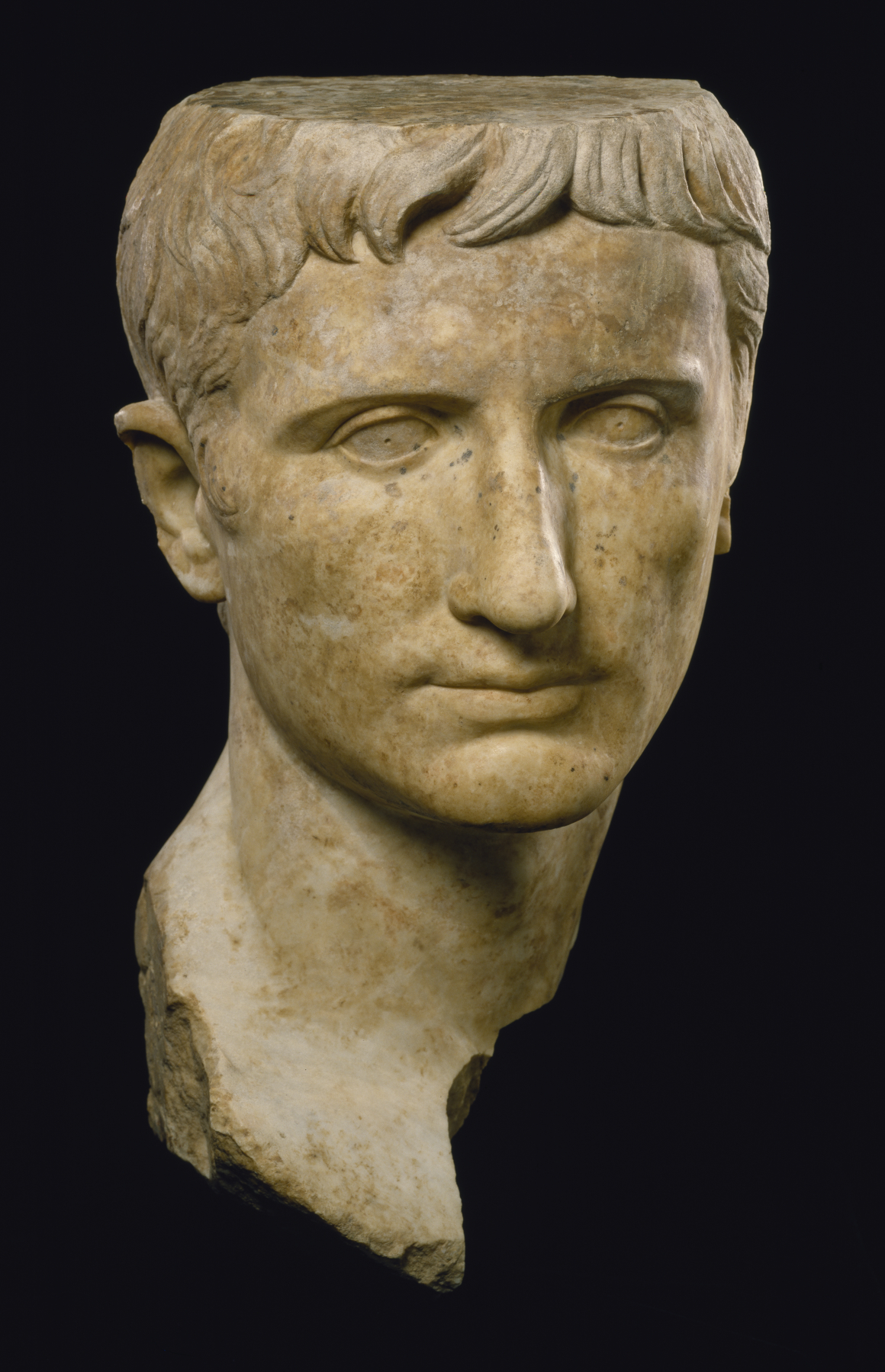Portrait of Emperor Augustus
(Roman Empire )
After Augustus (reigned 27 BCE-14 CE) consolidated Roman power and established what became known as the Roman Empire, he attempted to re-create the grandeur of classical Athens in Rome. In his monuments, Augustus copied timeless Greek models with ideal forms. This portrait of Augustus combines the elements of an individualized likeness with the smooth, youthful appearance of a god. The top and proper left side of the head are flattened in order to join additional attributes that no longer survive, in this case, likely a section of his toga, which would have been pulled up to cover part of his head in order to indicate that the emperor was engaged in a ritual act.
Provenance
Provenance (from the French provenir, 'to come from/forth') is the chronology of the ownership, custody, or location of a historical object. Learn more about provenance at the Walters.
Dikran Kelekian, New York and Paris [date and mode of acquisition unknown] [as "from Egypt"]; Henry Walters, Baltimore, 1913, by purchase; Walters Art Museum, 1931, by bequest.
Exhibitions
| 2008-2009 | Pompeii and The Roman Villa. National Gallery of Art, Washington; Los Angeles County Museum of Art, Los Angeles. |
| 1998-2001 | Highlights from the Collection. The Walters Art Gallery, Baltimore. |
| 1988-1989 | From Alexander to Cleopatra: Greek Art of the Hellenistic Age. The Walters Art Gallery, Baltimore. |
| 1984 | The Taste of Maryland: Art Collecting in Maryland 1800-1934. The Walters Art Gallery, Baltimore. |
| 1980 | Bilder vom Menschen in der Kunst des Abendlandes. Nationalgalerie, Berlin. |
| 1977-1978 | I, Claudius: Art in the Age of Julio-Claudians. The Walters Art Gallery, Baltimore. |
Conservation
| Date | Description | Narrative |
|---|---|---|
| 6/26/1961 | Treatment | cleaned |
| 7/6/1970 | Treatment | cleaned |
| 4/17/1979 | Loan Consideration | examined for loan |
| 4/26/1988 | Treatment | cleaned; loss compensation |
| 1/1/1992 | Technical Report | x-ray diffraction; other |
| 9/6/2007 | Loan Consideration | examined for loan |
Geographies
Roman Empire (Place of Origin)
Measurements
H: 16 3/4 x W: 7 11/16 x D: 9 1/2 in. (42.5 x 19.5 x 24.2 cm)
Credit Line
Acquired by Henry Walters, 1913
Location in Museum
Accession Number
In libraries, galleries, museums, and archives, an accession number is a unique identifier assigned to each object in the collection.
In libraries, galleries, museums, and archives, an accession number is a unique identifier assigned to each object in the collection.
23.21


